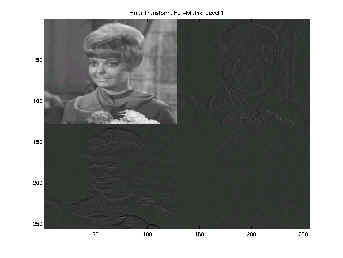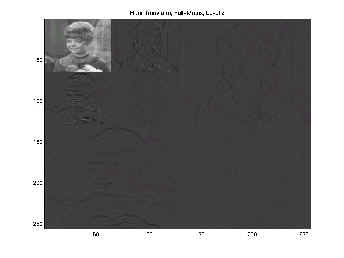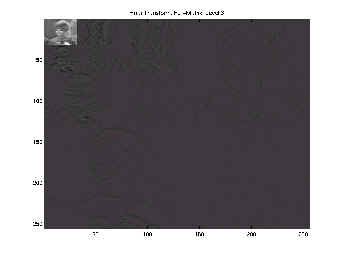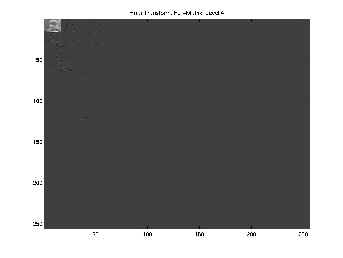FINAL REPORT
DCT Transform
Haar Wavelet Transform
quantization
methods
results
conclusions
HAAR WAVELET TRANSFORM
![]()
Wavelets are mathematical functions that were developed by scientists working in several different fields for the purpose of sorting data by frequency. Translated data can then be sorted at a resolution which matches its scale. Studying data at different levels allows for the development of a more complete picture. Both small features and large features are discernable because they are studied separately. Unlike the discrete cosine transform, the wavelet transform is not Fourier-based and therefore wavelets do a better job of handling discontinuities in data.
The Haar wavelet operates on data by calculating the sums and differences of adjacent elements. The Haar wavelet operates first on adjacent horizontal elements and then on adjacent vertical elements. The Haar transform is computed using:
![]()
One nice feature of the Haar wavelet transform is that the transform is equal to its inverse.
As each transform is computed the energy in the data in relocated to the top left hand corner. The following figure shows the image K-Girl after one Haar wavelet transform:

After two Haar wavelet transforms:

After
three Haar wavelet transforms:

After finally after four Haar wavelet transforms:

After each transform is performed the size of the square which contains the most important information is reduced by a factor of 4. The next step in the image compression process is quantization.
![]()
Contact the authors:
nofences@rice.edu
heidit@caam.rice.edu
hard@rice.edu
bwang@rice.edu